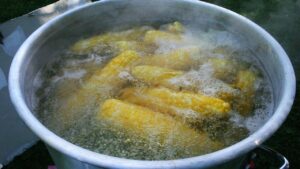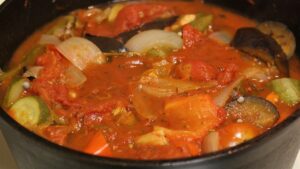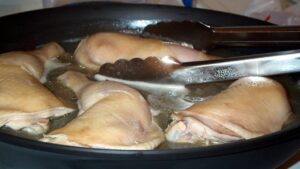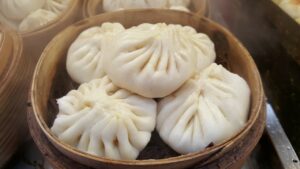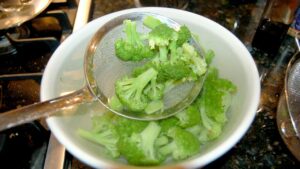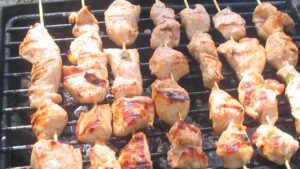What is Simmering?
Simmering came from the word simmer which is the state of bringing the liquid just below the boiling point. The method involves slowly softening the food with time and then adding the seasoning and other ingredients to the dish.
You can see bubbles that rise on the surface of the food. It requires a gentle bubbling if the heat is high and the pot is just about to boil.
It allows the food to deepen with time and adds more tenderness to the food. This slow cooking process is done gently with moist heat to retain the tenderness and moisture at the same time.
Key Takeaways
- Cook evenly and look for the temperature {185°F (85°C) and 205°F (96°C)}.
- Simmering involves simmering, slow simmering, and rapid simmering.
- With simmering, you can cook meats, fish, poultry, and even any kind of broth, gravy, and stock.
Understanding Simmering
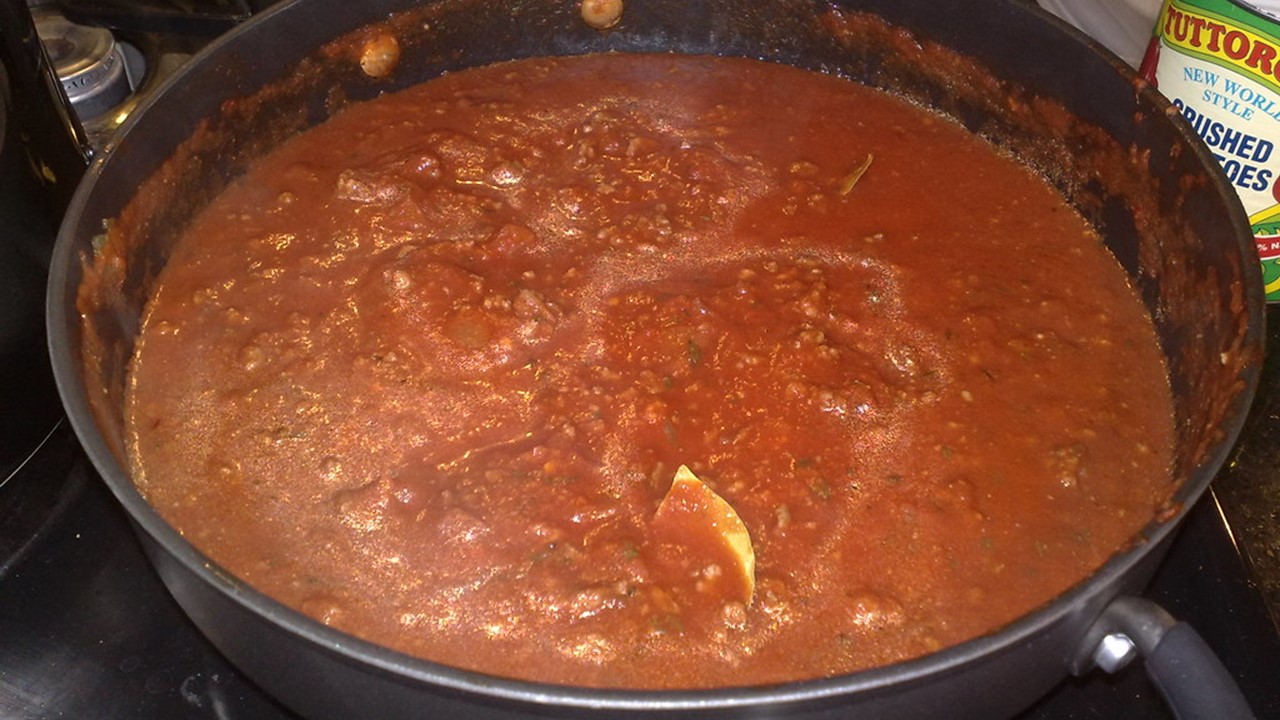
Simmering is a cooking technique that involves gently cooking food at a specific temperature below boiling point.
It is typically used for cooking large meat cuts, stews, soups, and vegetables.
The trick is to cook the food in liquid at a temperature ranging between 180°F to 205°F (this temperature will vary depending on altitude).
Simmering occurs when the water is not yet boiling, but small bubbles are forming on the surface of the liquid.
The origins of simmering can be traced back several centuries, to when people first began boiling water.
Simmering evolved as a cooking method in which vegetables and meat are cooked at a constant, slow temperature below the boiling point but above the poaching point.
This technique is used in cuisines all over the world, and is used to make a variety of slow-cooked meat and pot dishes.
To simmer, one must first set a stove top to a simmering point, and then add all the necessary ingredients to the pot.
The temperature must be carefully monitored to ensure it does not reach the boiling point.
If the temperature is about to exceed the simmering point, the pot should be removed from the flame.
What Are the Benefits of Simmering?
Simmering is a cooking technique that involves slow and moist heat cooking having loads of advantages of its own.
Cooks the Food Evenly
Simmering is slow and gentle which cooks the food evenly at a constant temperature.
Cooks the Food Tenderly
It helps in cooking the food tenderly and evenly. Fish, meats, grains, and even poultry can be cooked tenderly and even perfectly with simmering.
Flavors Remain Intact
The flavors of the liquid along with the food (ingredients & seasoning) offer a great taste and at the same time, flavors remain intact.
Easy Cooking Process
Cooking is very easy and effective at the same time. You just have to take care of the temperature.
Less Oil Usage
Oil is used very less in simmering and at the same time the whole dish is being cooked on low flame. It is almost cooked before reaching the boiling point.
What Are the Types of Simmering?
Simmering types depends fully on the temperature at which you are cooking. Depending on it you can simply segregate the simmering types into three divisions.
Simmer
With gentle bubbling and low medium heat, simmer. This technique is used for braises, sauces, stews, and soups.
Slow Simmer
With very little activity in the pot and low heat, you can see bubbles and steam wisp. The slow simmer is mainly used in braises and stocks.
Rapid Simmer
Here the bubbles will be small with medium to medium heat. This is mainly used for reducing the liquid to form a thick sauce.
How Do You Simmer in a Pan?
Step 1: You need water for simmering so we start with it. It is best to use cold or normal-temperature tap water (hot water from the heater tastes different).
Now place the pan with the water over high heat and cover it with a lid. The lid will help to retain the steam inside which helps in increasing the temperature quickly.
Step 2: You need to reach a temperature that is not more than the boiling point. You can keep the temperature to 185°F (85°C) and 205°F (96°C).
The temperature will vary in different stages as it starts a slow simmer and reaches a rapid simmer.
You can use a thermometer to check the temperature and visually also you can check out the tiny bubbles that are making their way to the surfaces but don’t be aggressive as they can reach the boiling point which is not the target.
Tips for Better Simmering
Every cooking technique needs to have some tips and tricks of its own. You can simply get some good cooking materials out of it.
Must Check the Recipe
There are two processes to cooking with a simmering technique of a recipe.
At some point, you can simply bring the dish to a simmer to make the liquid come to a boiling point then bring it to lower the heat.
On the other hand, in many recipes, you need to lower the boiling point and then reduce it to simmer it.
Both techniques are different from each other. So, you need to know which one you would like to make the dish.
For a Gradual Simmer – Heat Medium to Low
You can stay near the stovetop to cook or set the burner to medium to low heat.
You need to look for the liquid and constantly adjust the heat up and down to bring it to a simmer.
It was a good rule of thumb that till you reach the simmering point you don’t make the thumb turn back.
Observe the Bubbles Rising
If you see the bubbles coming rising through the surface. The tiny continuous bubbles are coming through the surface which makes the slow meats tender and allows the flavors to make it intact. This is being done with the unbalanced wisp of steam.
The Temperature Should be Checked
While simmering you must check out the temperature which “should be” between 185°F (85°C) and 205°F (96°C). If you want to accurately then make sure you use a thermometer.
Heat Regulations
You need to keep the heat regulated for a constant simmer. When you reach the simmering point then you need to maintain the heat up and down. You can simply adjust it up and down when it is needed or required.
Uses of Simmering in Indian Cuisine
If you say simmering is there in almost any cuisine out there in the world.
In Indian cuisine, you can see the touch of simmering in almost every kind of gravy item which can be a sweet dish or a non veg meat curry.
The involvement of gravy, soup, and stews are there in Indian cuisine which involves rapid simmering.
In Bengali cuisine also simmering is done in kofta, kalia, dalna, and any kind of gravy items especially cooking having a thick gravy recipe.
To be honest, you can see even the milk tea in India is also first boiled and then simmered to get the flavors of the tea.
Questions & Answers:
What is the Simmering Temperature?
Simmering temperature ranges from 185°F (85°C) and 205°F (96°C). It should be in between this otherwise it will reach the boiling point.
What Type of Heat Method is Simmering?
This is a moist heat process that needs to be at a certain range that is why one needs to be careful and perfect with the constant heat regulation.
What Foods Are Cooked by Simmering?
You can cook proteins like meats, fish, and poultry. Other than these you can make thick gravy where liquid can be reduced with the simmering process. You can also make broth or stock.
Conclusion
Simmering is a process that needs constant endeavor.
You can check out the dishes which are needed to make with the simmering technique and read the recipe so that you can use the exact type of simmering process that you can get great results from.

